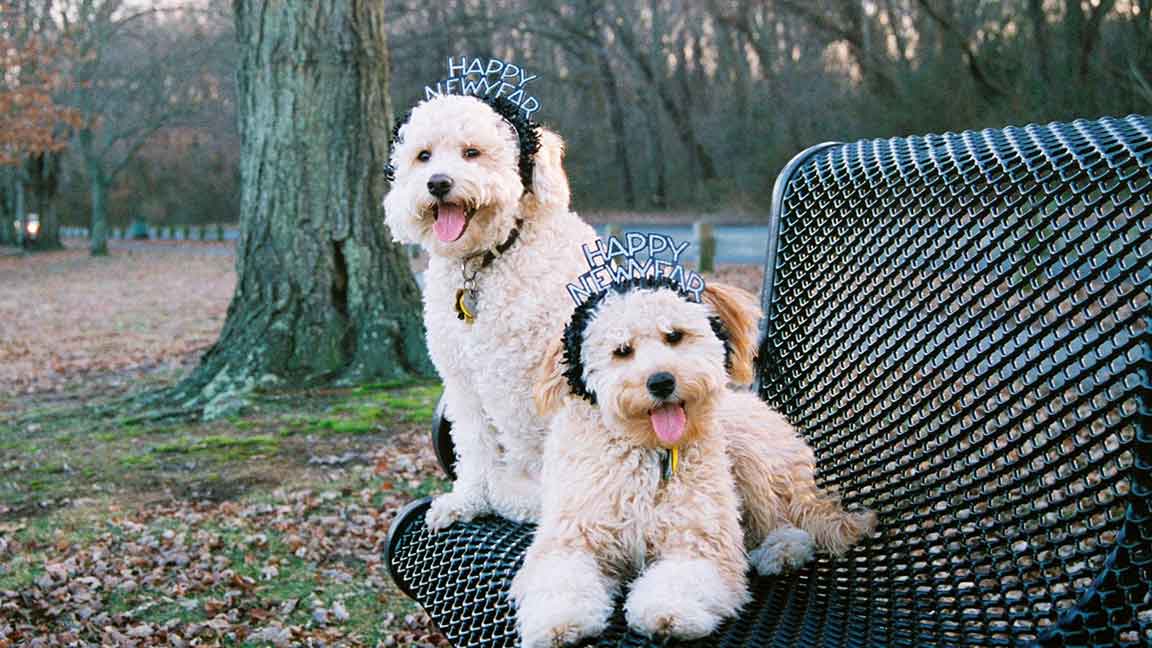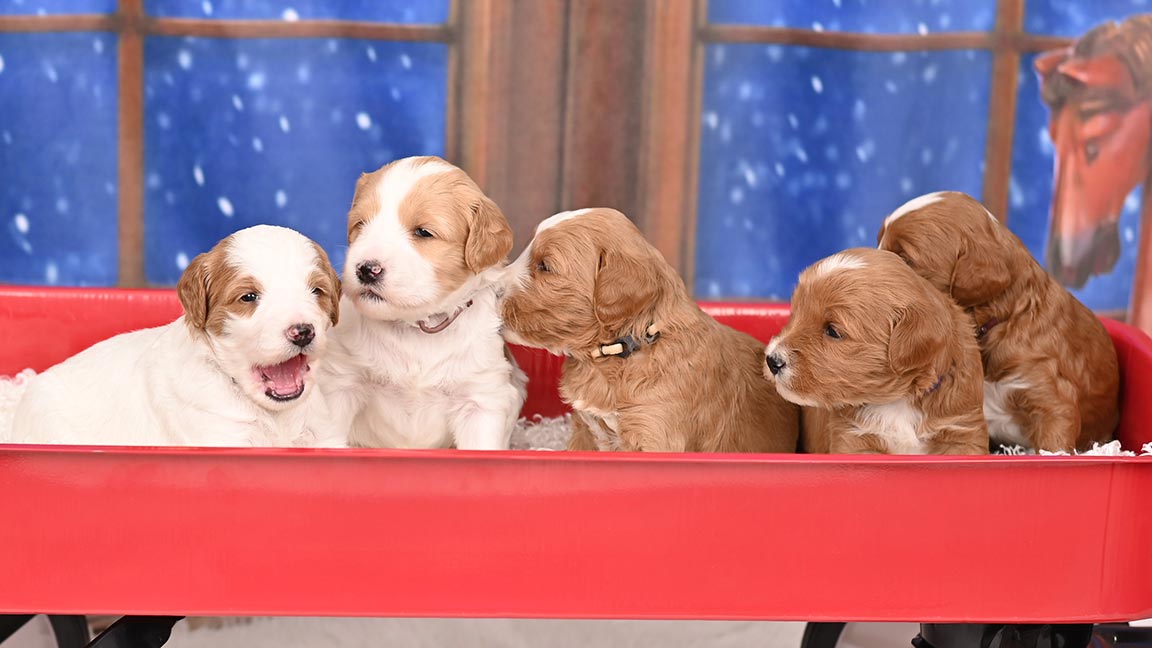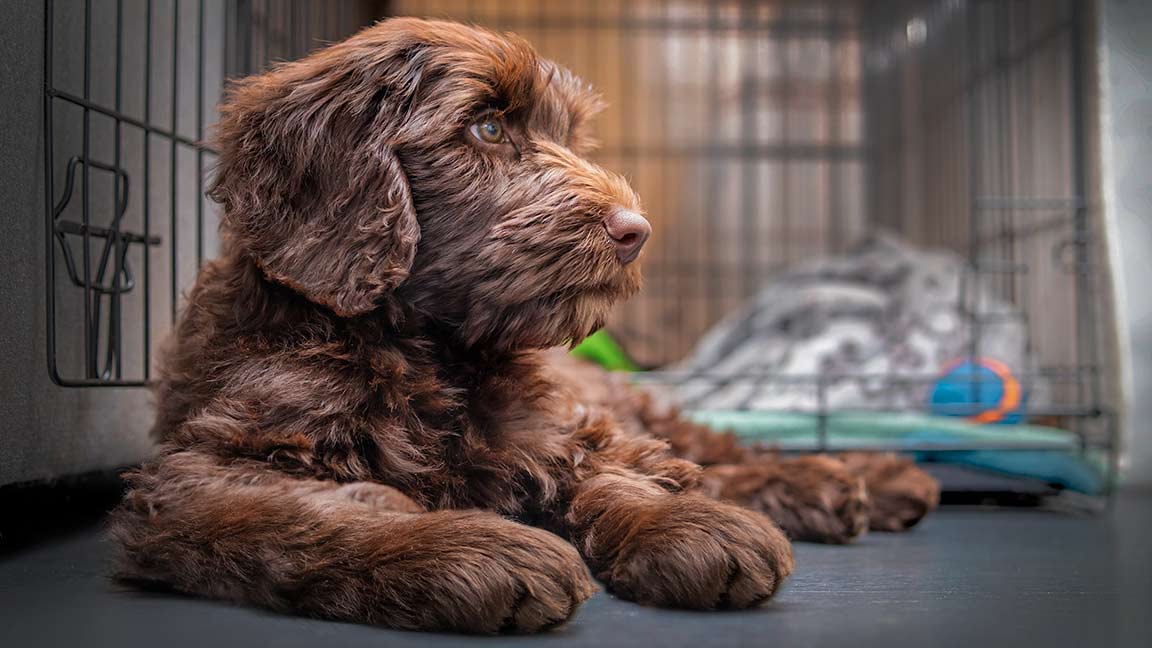
Ultimate Guide to Crate Training Your Goldendoodle Puppy
Looking into crate training your puppy? Look no further! This is the ultimate guide in the “How To” for crate training. Most importantly, it’s great to start early! Crate training your puppy is an essential piece to developing your young new family member.
Crate training benefits your puppy and your family in many ways, but it can be difficult initially. It takes consistency, practice, dedication, and patience which isn’t always easy after welcoming a new Goldendoodle puppy into your home. But don’t let that stop you! It is so worth it in the end when you have a young Goldendoodle who can spend the night in a crate and is safe and happy when home alone.
There are a few tips that every new puppy owner should know. These tips are crucial in crate training every Goldendoodle puppy. Whether you are training a medium Goldendoodle, standard Goldendoodle, or mini Goldendoodle, these basic rules remain the same. Be sure to follow them as you complete the step-by-step guide to training your Goldendoodle puppy.
- Goldendoodle puppies should always be placed in a crate during unsupervised time. It is important to know that young puppies are like young children that should not be left alone. This is not only for avoiding indoor accidents but also for the safety of your puppy.
- Outside of the crate, a puppy should only be allowed to play for short periods of supervised time before being taken outside for a potty break. More information on time outside of the crate for potty breaks is here.
- The general rule for the length of time for crate confinement is to add one hour to the age of the puppy (in months). Therefore, a two-month-old puppy should only be left in the crate for 3 hours stretches during daytime hours. This can be extended by one hour per month as the puppy ages.
- Potty training and crate training go hand in hand with a new puppy! A lot of the same tips and tricks apply to crate training. See some of those here!
Step-by-step guide to crate training your puppy:
-
Choosing the right dog crate size
The right-sized crate depends entirely on the size of the Goldendoodle you are bringing home. The larger your dog is projected to be, the larger the crate you will need. Wire dog crates with a divider are the best option for Goldendoodle puppies because the divider can be used while your puppy is small and adjusted or eventually removed as it grows. This saves money in the long run!
Purchasing what seems to be a large crate at first may seem counterintuitive, but with this divider, it can “grow” as your puppy grows! The reason for needing a smaller crate space at first is that your puppy will not want to soil the area in which it sleeps. While you want to give it room to be comfortable, you can’t give your furry friend enough room to soil the crate and remain comfortable in it. This not only would set potty training back but could also encourage your puppy to designate a corner inside the crate as the bathroom permanently.
The best dog crates are certainly the adjustable ones that can fit your puppy in all stages of life! Most come with a pan and strong structure for easy cleaning and durability. Keeping the crate clean is important in making your Goldendoodle comfortable. If your puppy does have an accident inside the crate, use a safe cleaner made to remove odors so as to remove all indications that the crate is to be used as a potty area. Accidents in the crate are typically due to leaving the puppy confined beyond its limit or providing too large a space inside the crate.
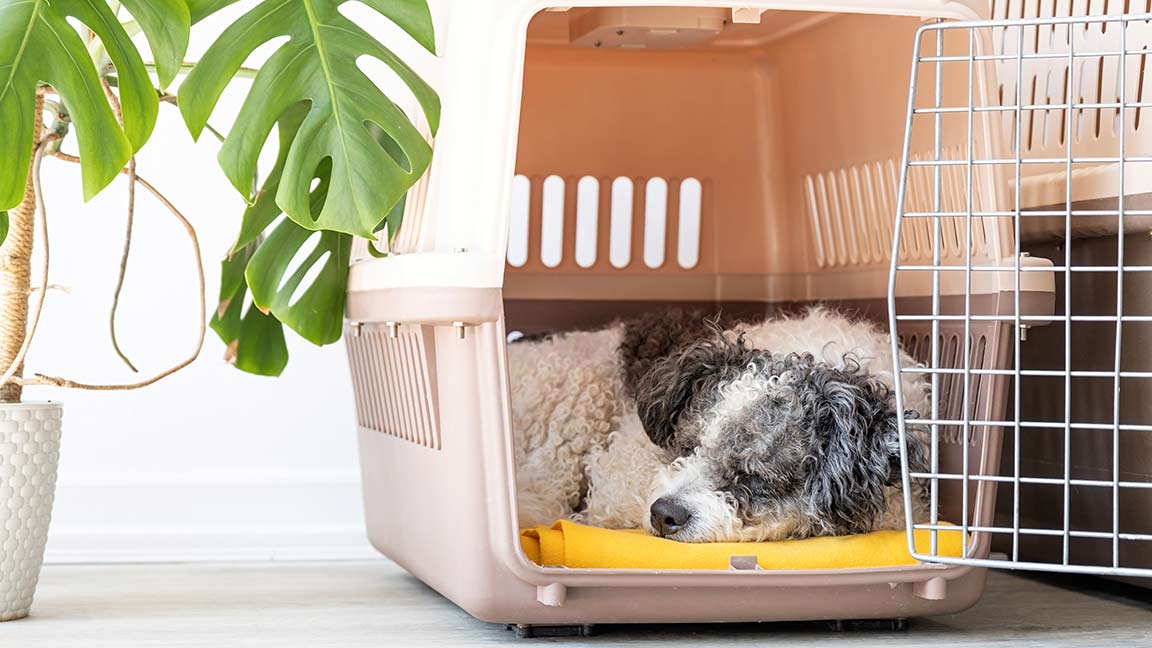
The right crate sizes for Goldendoodles are:
- Petitie Goldendoodle: 24”
- Mini Goldendoodle: 30”
- Medium Goldendoodle: 36”
- Standard Goldendoodle: 36-42”
Also, picking the right travel crate is important when considering taking your Goldendoodle on a new adventure! The best travel crates are plastic crates that are slightly smaller with a handle to allow easier moving than your home wire crate.
The right travel crate sizes in a plastic crate are approximate:
- Petite Goldendoodle: 20”
- Mini Goldendoodle: 24”
- Medium Goldendoodle: 26”
- Standard Goldendoodle: 28”
2. Special treats
The next important step in preparing for crate training is to purchase special training treats that your Goldendoodle can find when entering the crate or for rewards during other training sessions. Having special toys that are only available in the crate also serve as positive reinforcement for your puppy while alone.
3. Making the crate more comfortable
If you’re leaving your puppy in a crate, you want it to be comfortable and feel like their own space. You can start by adding a blanket/towel and toys in there that can keep them occupied and curious as you slowly introduce it. Having a few special chew toys to rotate inside the crate is a great way to add some fun to the process and encourage your puppy to look forward to his crate time. Giving your puppy something to do while confined will help them become more comfortable with their crate.
4. Gradually introducing the crate
One of the best things you can do to introduce the crate to your puppy for the first time is to place it in an area of your house that your puppy can easily see and access on their own. Whether that is the kitchen or busy living area, it is important that your puppy’s kennel is in an area that it knows well at first. You can begin by leaving the door open so they can walk in and out of the crate on their own.
5. Associate positive experiences with the crate
The next step is to use those special treats when your puppy enters the crate on their own. Any time this happens, it is great for your Goldendoodle to find a reward inside! This will speed up the process of getting them comfortable entering their crate.
Every time your puppy enters the crate, you should also start using a phrase or word that begins the association process in your puppy’s brain. For example, saying “crate” or “kennel” every time they enter the crate will begin to create an association of those words with the crate. Soon enough, your puppy will be entering their crate after hearing your command, as this is similar to teaching dogs other commands.
To encourage your Goldendoodle to head into the crate, you can play games. You can throw his favorite toy into the crate and reward him with a small tasty treat when he retrieves it. This teaches the fun game of fetch, all the while making the crate a fun place. This is a crucial step to the process, as your puppy will be spending a good amount of time in the crate. More information about positive reinforcement can be found here!
6. Starting with short periods
We mentioned maximum crate confinement times above, but it is important to start with very short crating times in the beginning to allow your puppy to gauge the crate as a good and safe place. Feeding them in the crate with the door open is a good option. Crating your puppy while you get a shower or while you are cooking dinner allows for a short stay in the crate, but always make sure the puppy is not complaining before opening the crate door to allow him to come out again.
Before tossing in a treat or toy for him to entice him to enter the crate, always take him out for a potty break first. If your puppy bulks at entering the crate, gently place him in the crate and close the door. Always leave a safe chew toy in the crate so it isn’t a jail cell. You want your puppy to think of the crate as their very own castle!
7. Regular, consistent crate sessions
Develop a schedule for crate confinement times as dogs accept what they expect as the norm. Just as a human toddler has regular nap times, a puppy should have regular crate times. This encourages the puppy to nap during crate times which makes the process easier for both him and you.
The perfect time to incorporate crate sessions is when you need to leave the house for an errand or during times when your puppy may need to reset. Making this part of your daily routine will increase good behavior.
8. Out-of-site time vs. I can see you time
Some puppies are stimulated when they can see you while in their crate. Others are comforted just knowing you are nearby. Both situations need to be mastered, as your puppy will not be able to see you when you are out running errands. It is much easier on humans to actually leave the house when dealing with lots of crying and whining. You need to avoid the desire to open the crate and comfort the puppy as they quickly learn how to manipulate you into helping them escape their crate. Allowing your puppy to see you during confinement time, like when cooking dinner, is a good thing to practice as well. When that important phone call comes in that will distract you from supervising your puppy, you need to be able to snatch him up and place him in the crate so you can concentrate on the call. You want him to learn to be accepting and quiet in these situations.
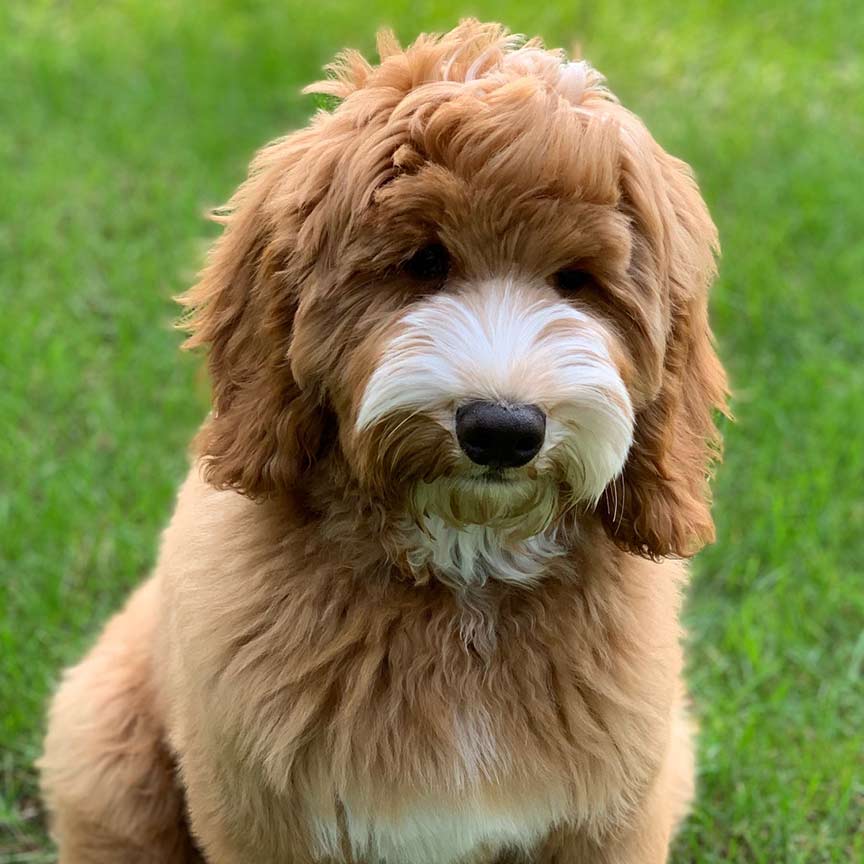
Now that you have a step-by-step guide, here are a few things that can help speed up the learning process!
1. Avoid using the crate as punishment
One of the most important things in this process is not to use the crate as any form of punishment. It should not be a place of timeout or insinuate any negative consequence. Using a crate for punishment will make your dog feel guilty anytime you have to put them in the crate while being unsupervised or leaving the house. This could lead to intense separation anxiety.
2. Personal space
Allow your Goldendoodle to have their own personal space in their crate. Never bang on the crate or raise your voice at the puppy while he is inside.
Providing dogs with personal space in their crate is crucial for their mental well-being and overall comfort. Just like humans, dogs also require a sense of security and privacy, especially regarding their resting and sleeping areas. Crate training is a helpful tool for creating a safe haven for your furry friend.
Time alone is also necessary for Goldendoodles. It is essential to provide solitude and alone time in their crate. This can become a place for retreat when needed.
3. Ignore barking or whining
One crucial step to crate training is ignoring barking and whining in the process. This is hard because you want to comfort your furry friend, but ignoring this behavior is important. By taking your puppy out of the crate while whining, you may be teaching them that whining or barking will get them what they want. This is an unhealthy and bad habit to form. Always make sure there is at least 30 seconds of quiet time before opening that crate door so you are rewarding the appropriate behavior.
Conclusion
Overall, crate training a puppy can seem to be hard and scary. However, you should condition your puppy to be comfortable being inside its crate. It does take dedication and can be frustrating at times, but it is one of the most important training processes you can do when welcoming a Goldendoodle puppy into your home. It is a valuable tool for dog owners to provide their furry companions with a safe and secure space.
By carefully selecting the right crate size, having comfortable bedding, and creating positive associations, dogs can learn to view their crate as a personal haven. Respecting their need for personal space, allowing them to retreat to the crate voluntarily, and avoiding using it as a form of punishment are crucial aspects of successful crate training. When done correctly, crate training not only aids in housebreaking and travel but also gives dogs a sense of security, promotes good behavior, and provides them with a dedicated space they can call their own.


